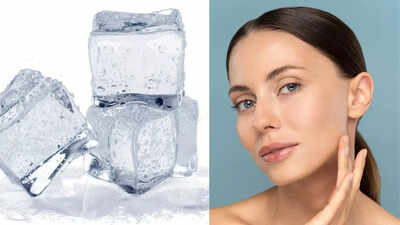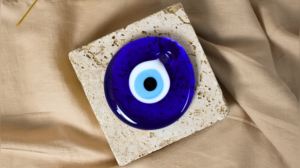Facial icing, or cryotherapy, has surged in popularity on social media, touted for its alleged therapeutic and aesthetic benefits. Proponents claim it can alleviate acne, reduce swollen eyes, and address various other skin concerns. While cold therapy is a recognized treatment for injuries and pain management, the scientific evidence supporting its benefits for facial skin remains limited.

Despite the lack of concrete scientific backing, many individuals believe in the efficacy of facial icing, fueling its rise as a popular beauty trend. However, further research is necessary to validate its purported benefits for the skin.
Healthline suggests two common methods for applying ice to the face:
With either method, gently massage your face in slow, circular motions for approximately 1 to 2 minutes. Exercise caution to avoid prolonged direct contact between the ice and your skin, as extended exposure may lead to irritation.
This circular massage can be performed once daily, targeting specific areas such as:
Before incorporating ice facials into your routine, seek personalized advice from a healthcare or skincare professional. Here are some crucial tips to keep in mind:
Regularly change the ice and wrapping to prevent the spread of bacteria. Remember to use facial icing as a complement to, not a replacement for, your regular skincare regimen.
The surge in popularity of ice facials can be attributed to several factors:
Healthline cautions that prolonged or improper use of facial icing can lead to adverse effects, including:
Individuals with pre-existing health conditions such as diabetes or Raynaud's syndrome should exercise caution or consult a doctor before trying facial icing, as it may exacerbate existing sensitivity or nerve issues.
Facial icing offers several potential benefits:
While these benefits appear promising, it's crucial to acknowledge that further research is required to confirm the direct effects of facial icing on puffiness and acne.
Disclaimer: The content provided is for informational purposes only and does not constitute medical or dermatological advice. Individual skin types and conditions vary. Always consult a dermatologist before embarking on new skincare routines.
Newer articles
Older articles
 Evil Eye Amulet: Protective Charm or Portal to Dark Forces? A Cultural Debate
Evil Eye Amulet: Protective Charm or Portal to Dark Forces? A Cultural Debate
 Jayden Seales Fined by ICC for Provocative Gesture During Australia Test Match
Jayden Seales Fined by ICC for Provocative Gesture During Australia Test Match
 Paralympic Archer Sheetal Devi's Viral Video Shows Her Driving Car with Feet, Defying Expectations
Paralympic Archer Sheetal Devi's Viral Video Shows Her Driving Car with Feet, Defying Expectations
 Broad Slams India's Team Selection After Headingley Test Loss, Calls for Roster Tweaks at Edgbaston
Broad Slams India's Team Selection After Headingley Test Loss, Calls for Roster Tweaks at Edgbaston
 Umpire Controversy Erupts: West Indies Coach Sammy Questions Holdstock's Consistency in Barbados Test
Umpire Controversy Erupts: West Indies Coach Sammy Questions Holdstock's Consistency in Barbados Test
 Sachin Tendulkar: 1983 World Cup Win Sparked My Cricket Dream at Age 10
Sachin Tendulkar: 1983 World Cup Win Sparked My Cricket Dream at Age 10
 Jaiswal's Fielding Woes: Ex-India Star Kaif Points to Potential Cause for Dropped Catches in England Test
Jaiswal's Fielding Woes: Ex-India Star Kaif Points to Potential Cause for Dropped Catches in England Test
 Team India's England Tour: Rahul's Sleep Strategy, Coaching Rituals, and Coffee Culture Revealed
Team India's England Tour: Rahul's Sleep Strategy, Coaching Rituals, and Coffee Culture Revealed
 Suryakumar Yadav Successfully Completes Sports Hernia Surgery, Eyes Return to Cricket
Suryakumar Yadav Successfully Completes Sports Hernia Surgery, Eyes Return to Cricket
 Gujarat Cricket Set to Launch T20 League in 2025-26 Season
Gujarat Cricket Set to Launch T20 League in 2025-26 Season